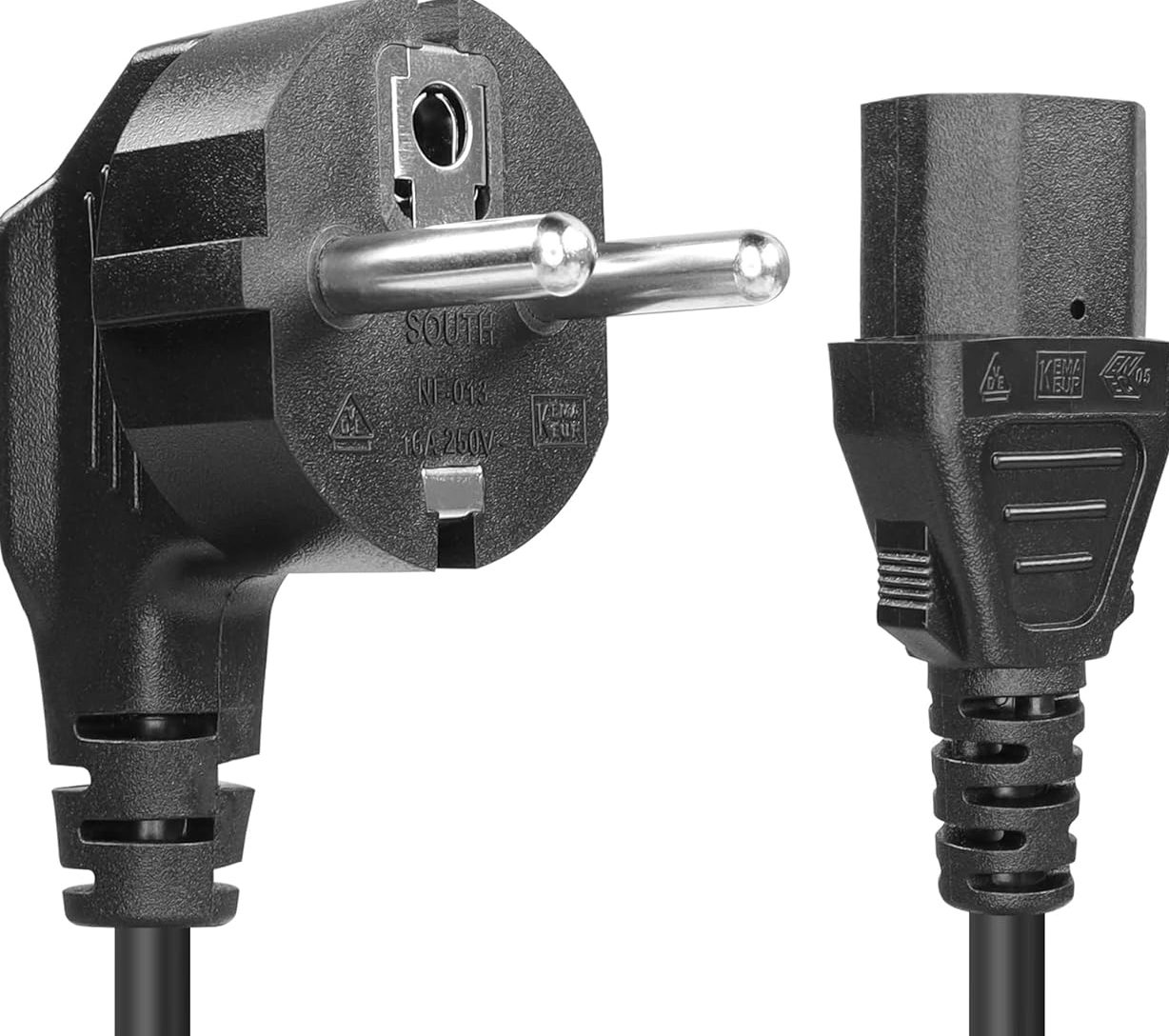In our daily lives and work, we often encounter both power cords and power adapters. They may seem similar, but their functions are completely different. Simply put:
Power Cord: Transmits electrical energy, acting as a “carrier” of electricity.
Power Adapter: Converts electrical energy, acting as a “processor” of electricity.
1️⃣ Power Cord
What is it?
A power cord is an electrical wire with a plug (such as the Chinese standard GB, American standard UL, British standard BS, European standard VDE, etc.) on one end and a connector for a power device or adapter on the other. Common connector types include IEC 60320 C13/C14, C5/C6, C7/C8, etc.
What does it do?
The power cord’s job is simple: it directly transmits electrical energy. It delivers AC power (110V/220V) from the outlet to the device intact, without changing the voltage or current type.
Common Applications
Desktop computers: Both the main unit and monitor have built-in power modules, requiring only a single power cord.
Home appliances: Appliances such as rice cookers, washing machines, electric fans, and kettles use AC power directly.
Industrial/commercial equipment: Some high-power machines also require only a power cord.
👉 Key Features: Stable, safe, and reliable transmission, with standard certifications (such as VDE, UL, CCC, BS, SAA, PSE, etc.)
2️⃣ Power Adapter
What is it?
A power adapter is a small power conversion device, commonly known as an external power supply or charger.
What does it do? The adapter’s job is to convert alternating current (AC) into low-voltage direct current (DC) for safe use by electronic devices:
Step-down: Reduces 220V/110V to the required low voltage (such as 5V, 12V, or 19V).
Rectify: Converts AC to direct current (DC).
Filter: Outputs smooth, safe DC power.
Common Applications
Laptops: External adapters reduce weight and prevent concentrated heat.
Mobile phones/tablets: Require low-voltage DC power between 5V and 20V.
Routers, speakers, and cameras: All rely on power adapters for long-term stable operation.
👉 Key Features: Voltage conversion, stable output, safety protection (overcurrent/overvoltage/short-circuit protection)
🔑 Comparison Table of Power Cords vs. Power Adapters
Comparison Items: Power Cord Power Adapter
Function: Transmits power; Converts power (AC to DC)
Voltage and Current: Does not change the voltage or current type; Converts high-voltage AC to low-voltage DC
Appearance: A cord with a plug; A “brick” or small box, usually with a power cord
Applications: Home appliances, computers, monitors, high-power appliances; Mobile phones, laptops, routers, smart home devices
Generates heat: Barely generates heat; Will generate heat, requiring heat dissipation design
✅ Summary
Power cords = Power transporters: Responsible for delivering AC power to devices without converting it.
Power adapters = Power processors: Responsible for converting high-voltage AC power to safe, low-voltage DC power.
So, when choosing a power adapter, consider the needs of your device:
Devices that require direct AC power → Choose the appropriate power cord
Devices requiring low-voltage DC power → Require a power adapter.
If you’re a factory, brand owner, or buyer, pay attention to plug standards, cable specifications, and certifications to ensure product safety and compliance in your target market.




